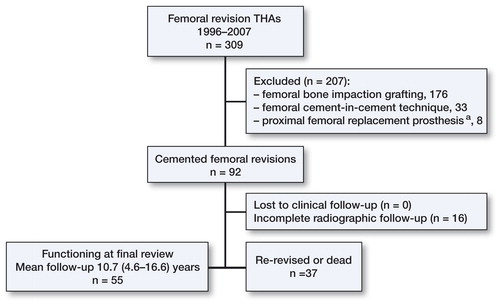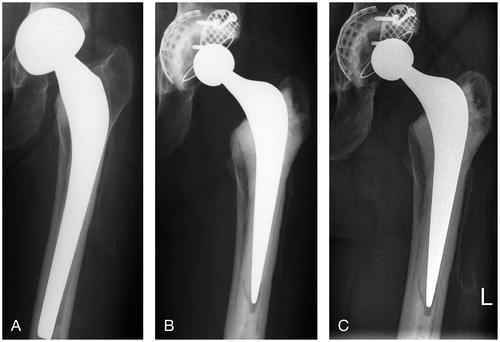Figures & data
Figure 1. The flow chart showing the identification of eligible patients for the study. aProximal femoral replacement prosthesis placed for oncologic reasons or because the bone stock loss was too extensive to perform a conventional revision.

Table 1. Original indications for the 92 primary THAs/hemiarthroplasties and revisions
Table 2. 19 hips with 1 or more femoral reoperations. In 14 of these cases, a re-revision of the femoral component was performed
Figure 2. Kaplan-Meier survival curves with re-revision of the femoral component for any reason (A), aseptic loosening (B), femoral reoperation for any reason (C), or subsidence of ≥ 5 mm (D) as the endpoint.

Figure 3. A. A 43-year-old woman at presentation with a loose cemented hemiarthroplasty with protrusion of the head. B. Directly after the conversion to a total hip arthroplasty (the acetabulum was reconstructed with metal meshes and bone impaction bone). C. 11 years postoperatively, showing a stable femoral and acetabular component without any signs of loosening.

